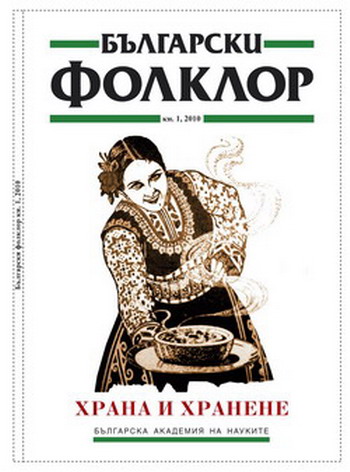Преди Cookipedia и след това: готварски рецепти от ръкопис 680 от библиотеката на Хилендарския манастир
Before Cookipedia and after: The Culinary Recipes in Miscellany 680 from Hilandar Monastery Library
Author(s): Adelina AngushevaSubject(s): Anthropology
Published by: Институт за етнология и фолклористика с Етнографски музей при БАН
Summary/Abstract: In contrast to Ancient Roman, Byzantine and Western medieval written traditions, and unlike other genres of instructions (such as healing remedies, methods for ink preparation), cooking recipes had never been preserved in the Orthodox Slavic cultures during the Middle Ages. Yet, the diet of a medieval and post-medieval Bulgarian was possibly influenced by two systems, both attested in written sources – (1) the Church calendar, imposing fasts, and prescribing or prohibiting certain foods at a specific period of the year, (2) and a number of dietary texts based on the ancient theories, recommending the food appropriate for a particular month. The interest in the latter works increased in the post-medieval period, when for the first time the names of traditional Balkan meals appeared in them to indicate the increasing Ottoman influence on Balkan cuisine. With the view of the preserved culinary practices, this lasting Ottoman legacy seems to come to us in a rather distorted form: Christian population has been using pork in many of the traditional Ottoman dishes, responding rather to the economic conditions than exteriorizing a colonial “trauma.” When in the nineteenth century for the first time culinary recipes started to circulate in a written form in Bulgarian milieu, they did not record or memorize the existing traditional dishes, but presented unfamiliar, foreign recipes, and broadened the knowledge about ingredients, foods and technologies. The article studies possibly the oldest Bulgarian handwritten collection of three culinary recipes from the nineteenth-century Hilandar miscellany 680. The first recipe is for processed and smoked pork American style, the other two – for pickled fish. The manuscript, large part of which is an instruction for developing photographs, contains practical information of various kinds gathered by a layman. The texts display the linguistic features of Eastern Bulgarian dialect. Their lexis is a mixture of spoken Bulgarian, Church Slavonic forms, Turkish, Russian, and very occasionally Italian words. The heterogeneity of the texts betrays not only a copyist, uncertain of his communicative strategies, of orthographic and stylistic rules, but also mirrors a multicultural society exposed to diverse influences. Although similar in their ingredients and methods of preparation, none of the three recipes is identical to the texts of P. R. Slaveykov’s cook book. Rather, both P. R. Slaveykov’s and Hilandar collections reflect the shift in the interests of the changing town society and the growing educated public.
Journal: Български фолклор
- Issue Year: XXXVI/2010
- Issue No: 1
- Page Range: 141-150
- Page Count: 10
- Language: Bulgarian
- Content File-PDF

